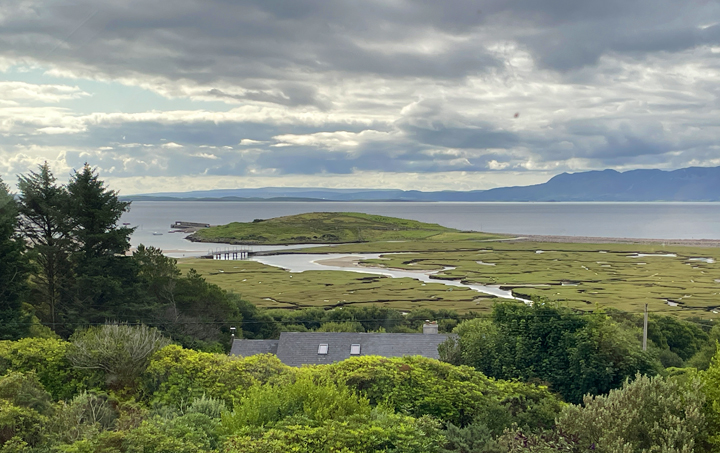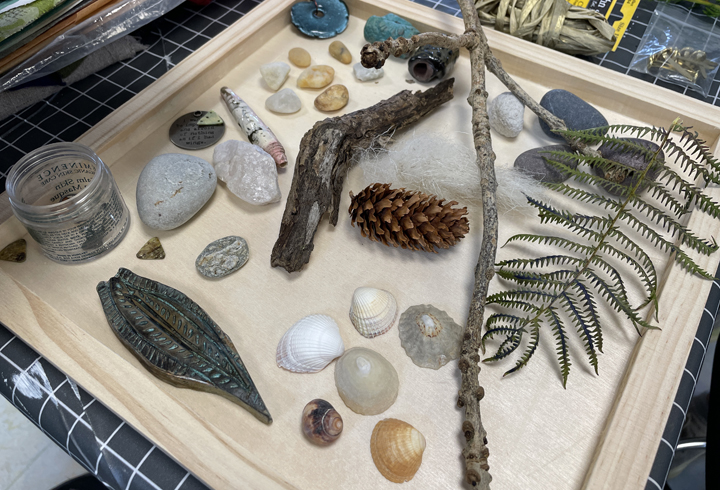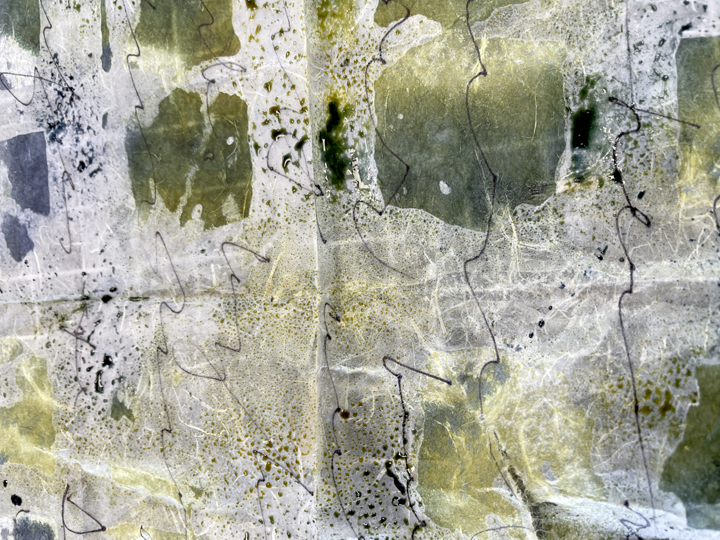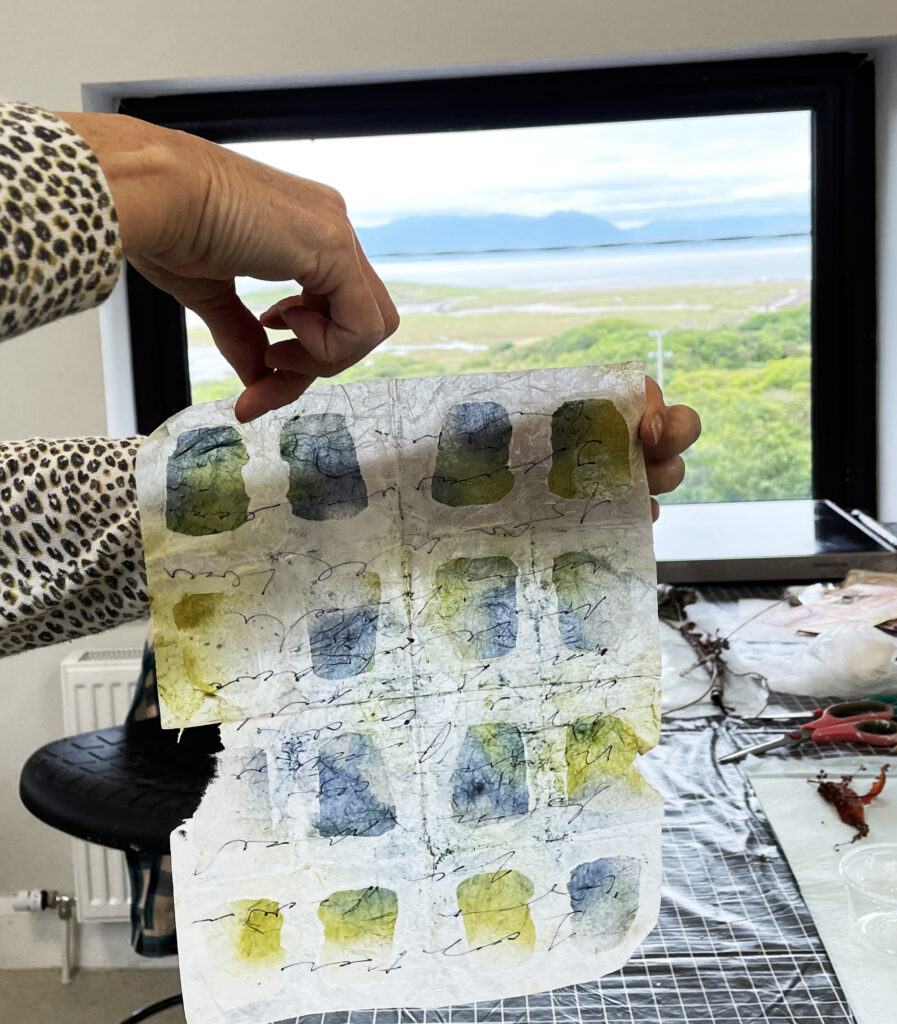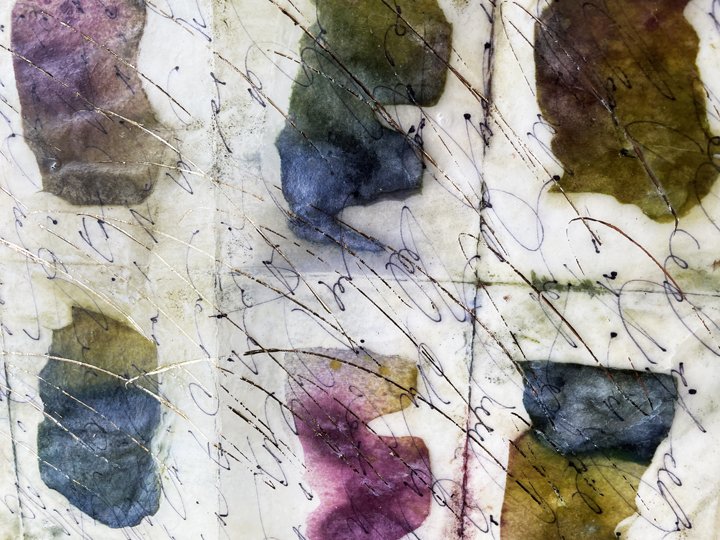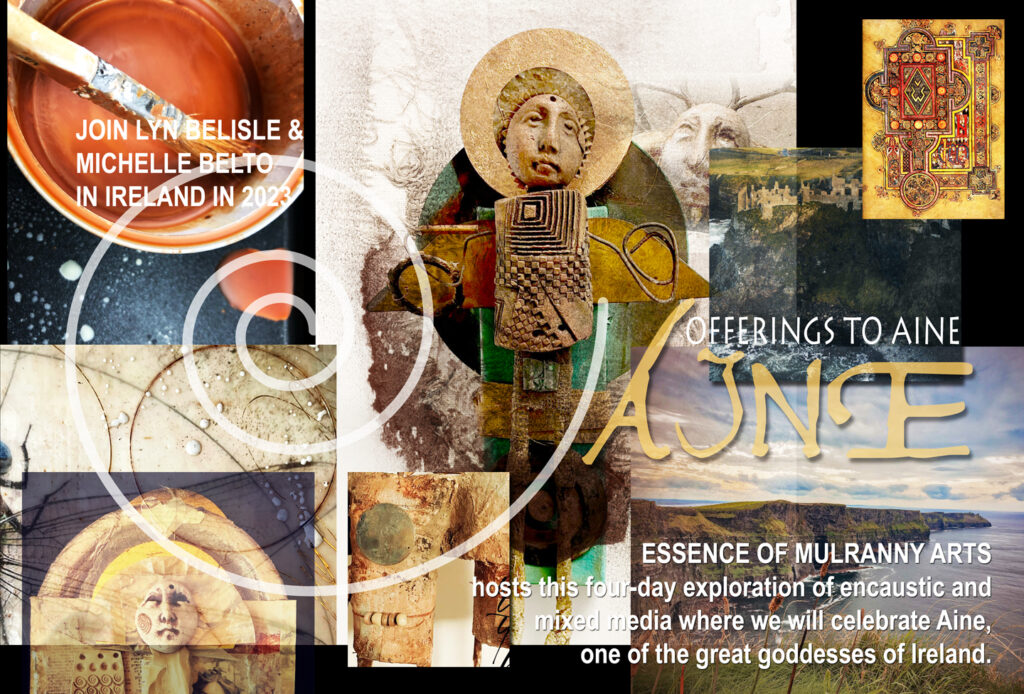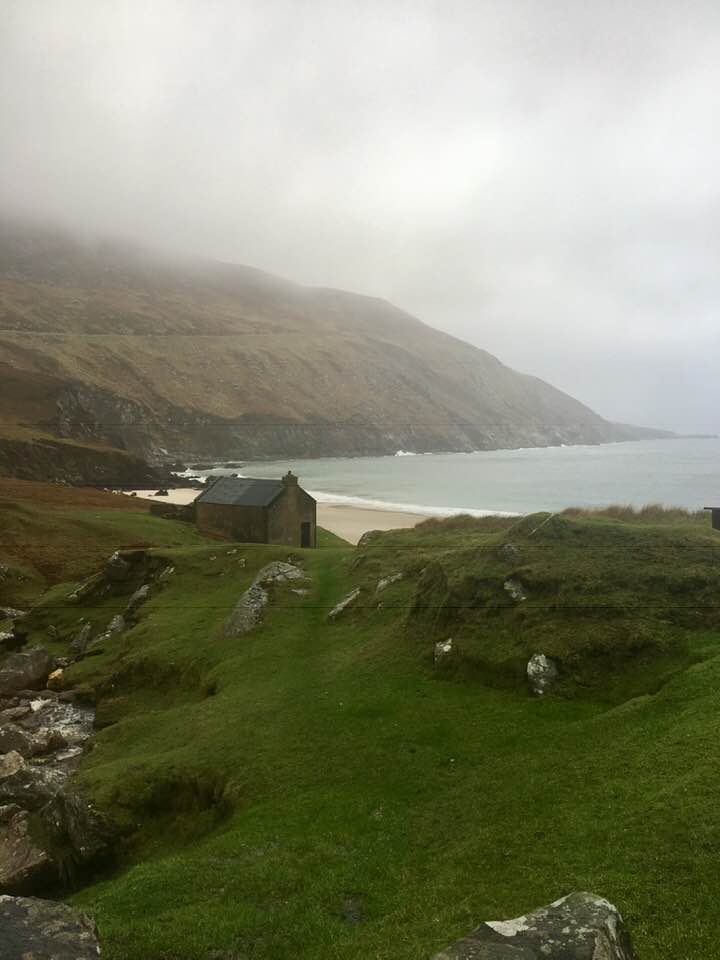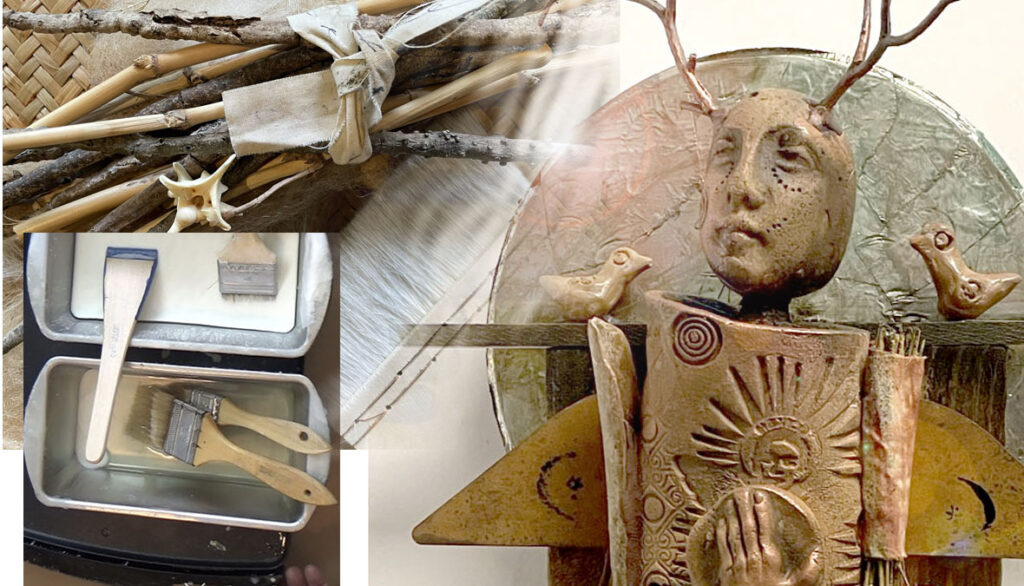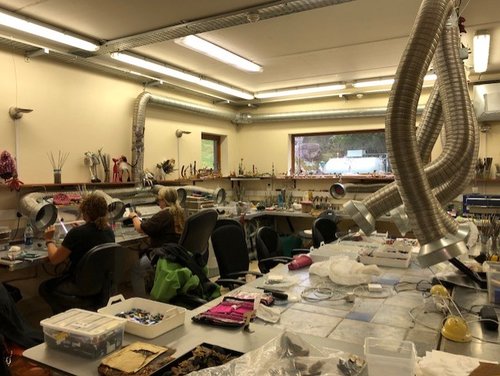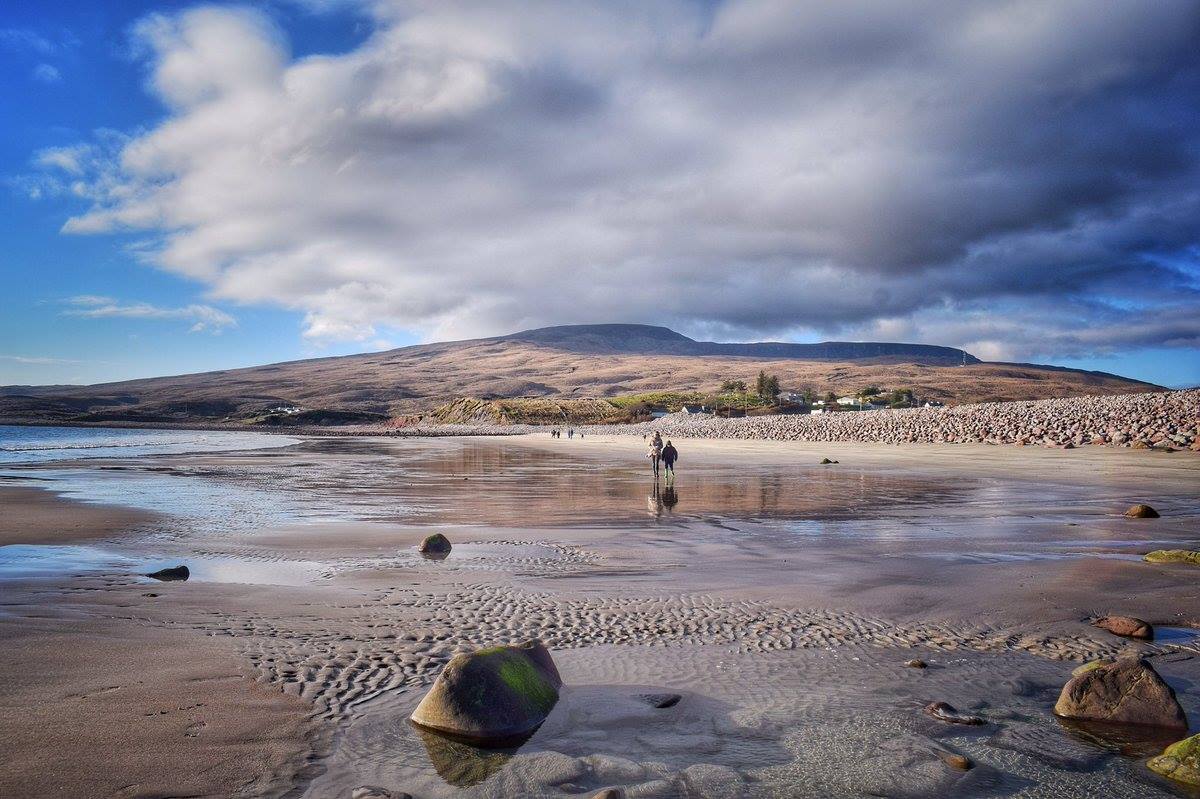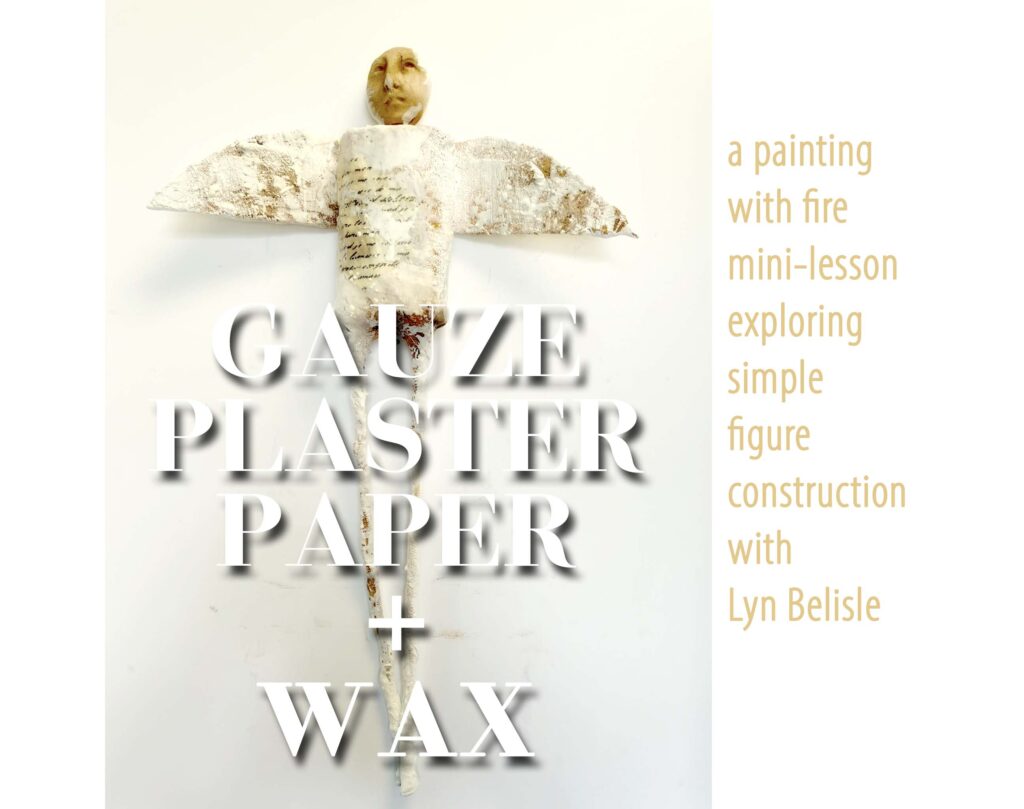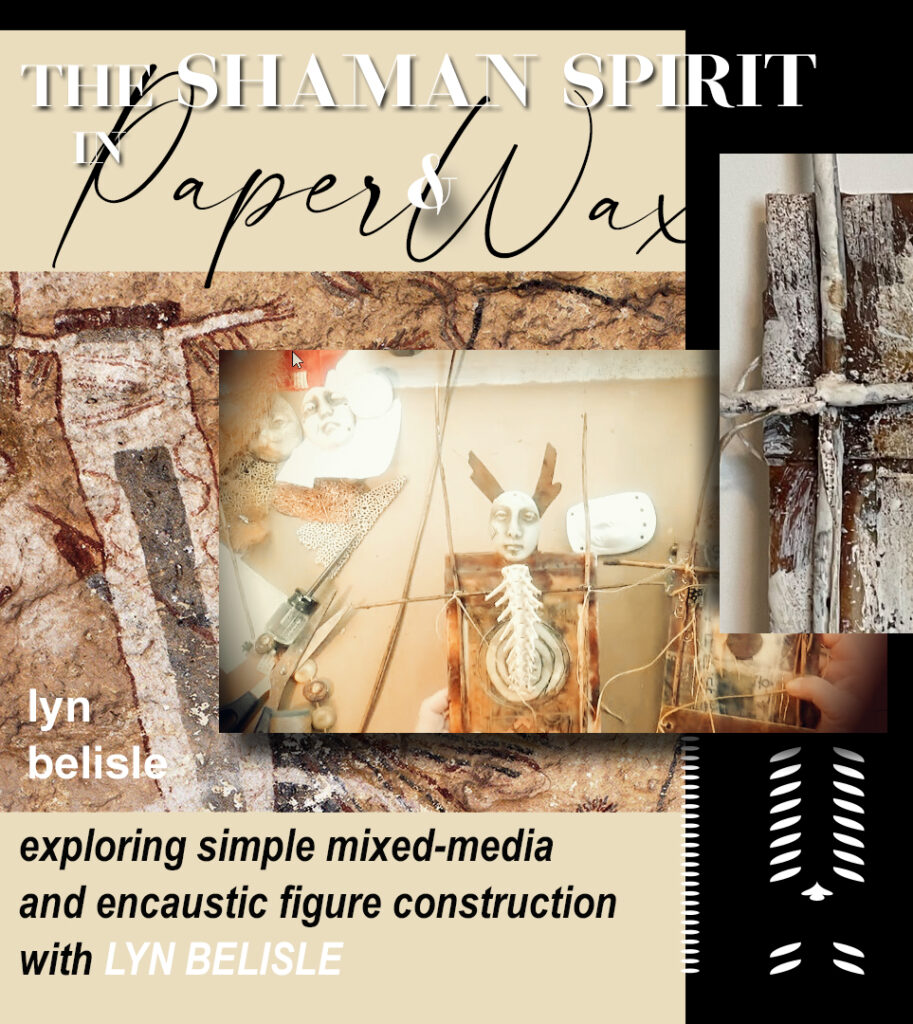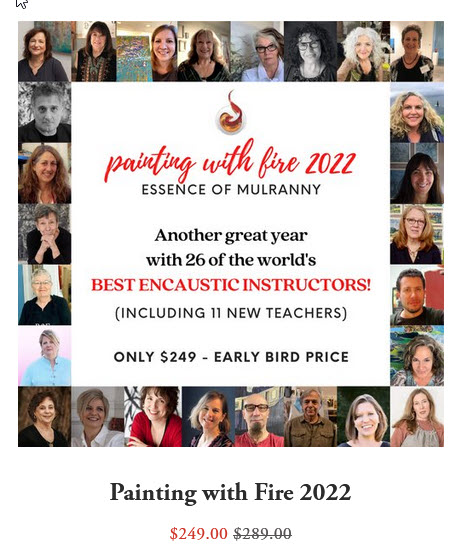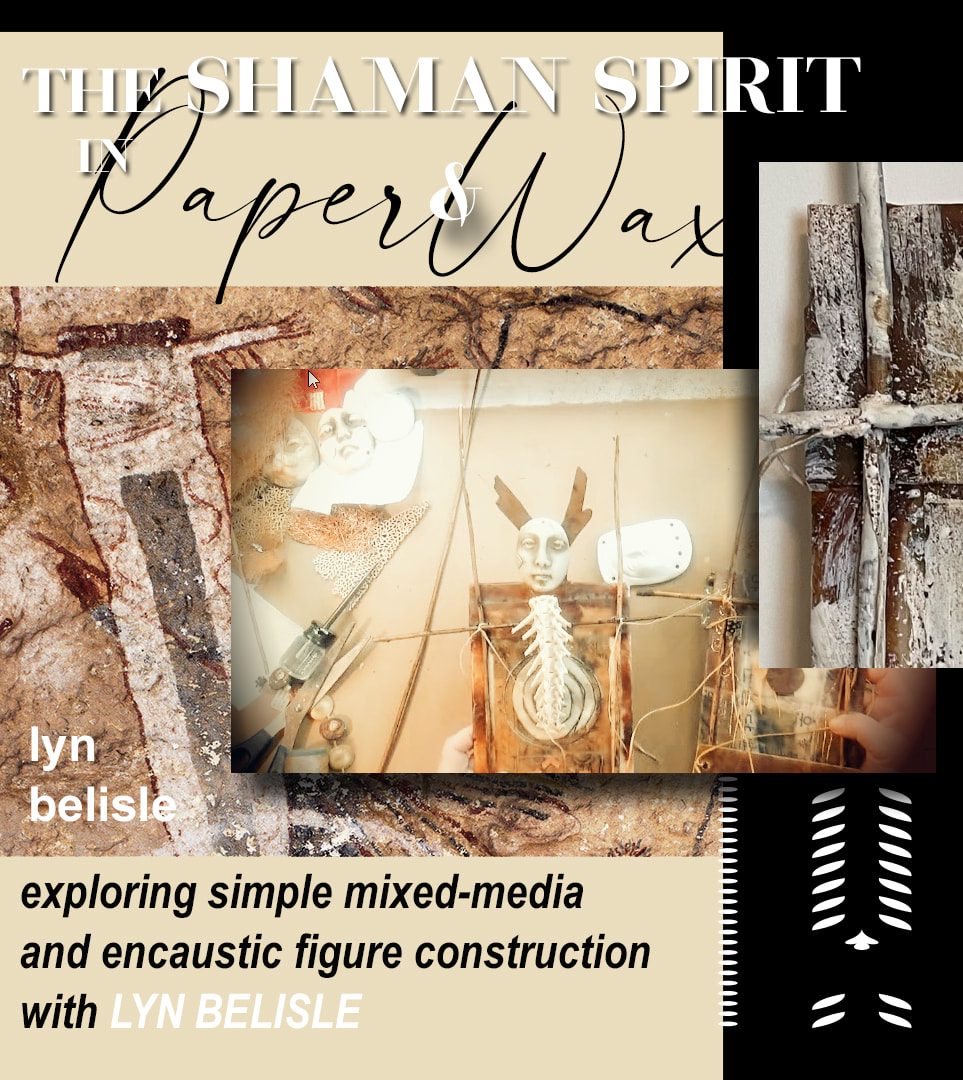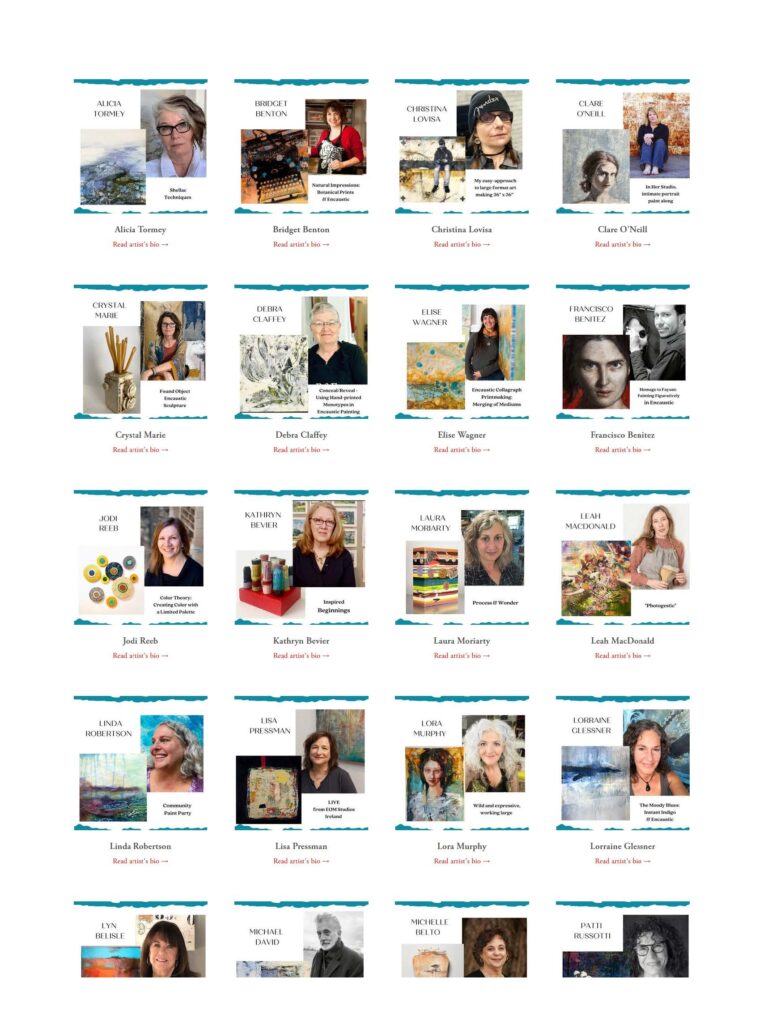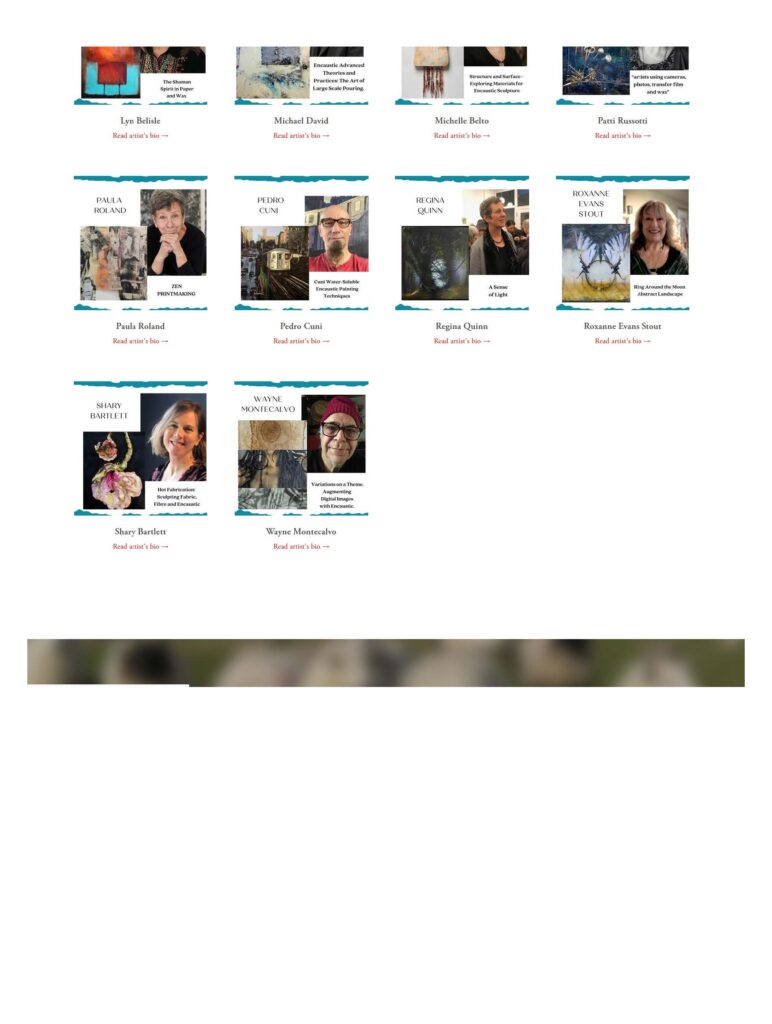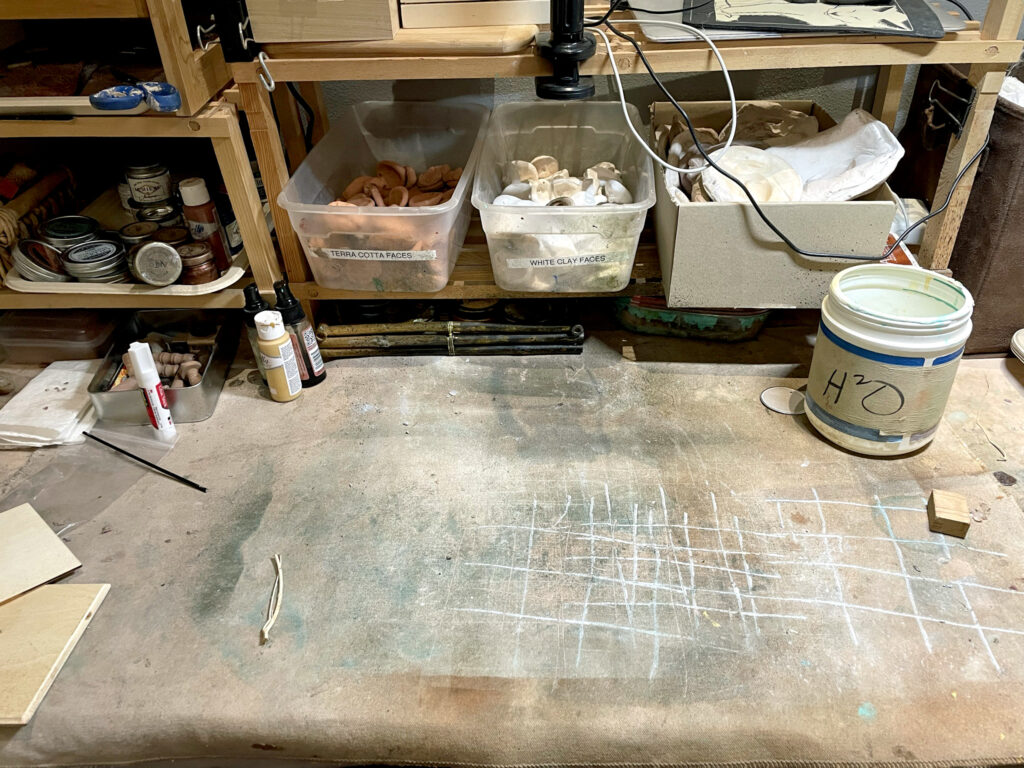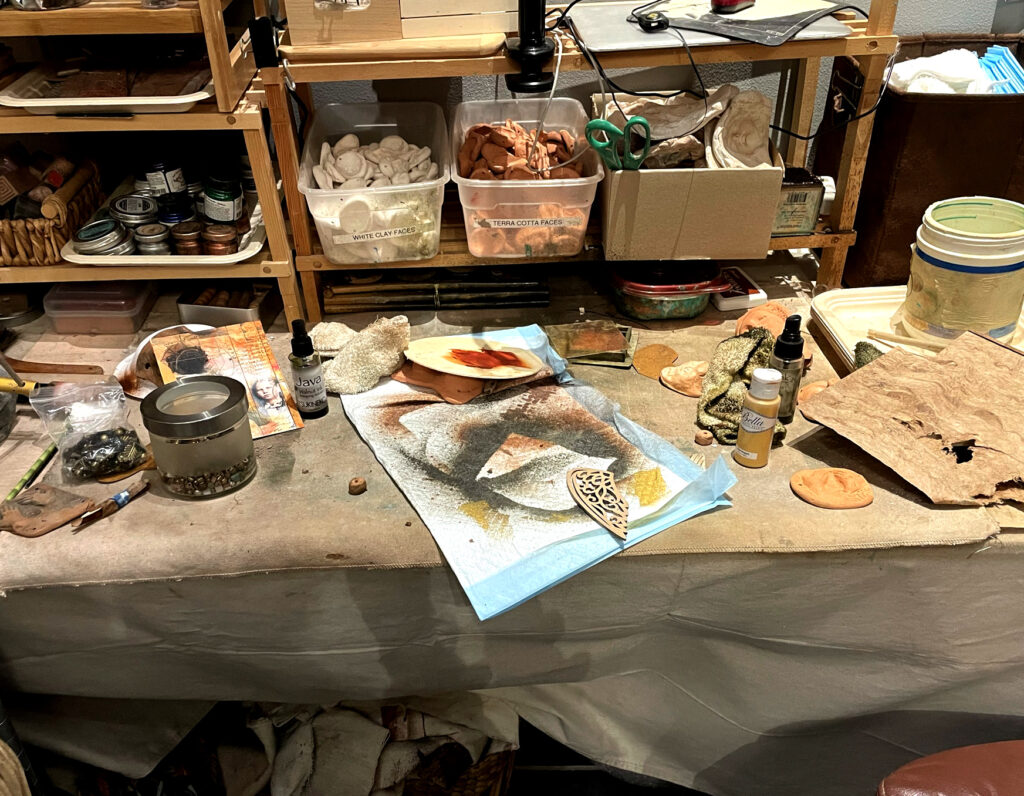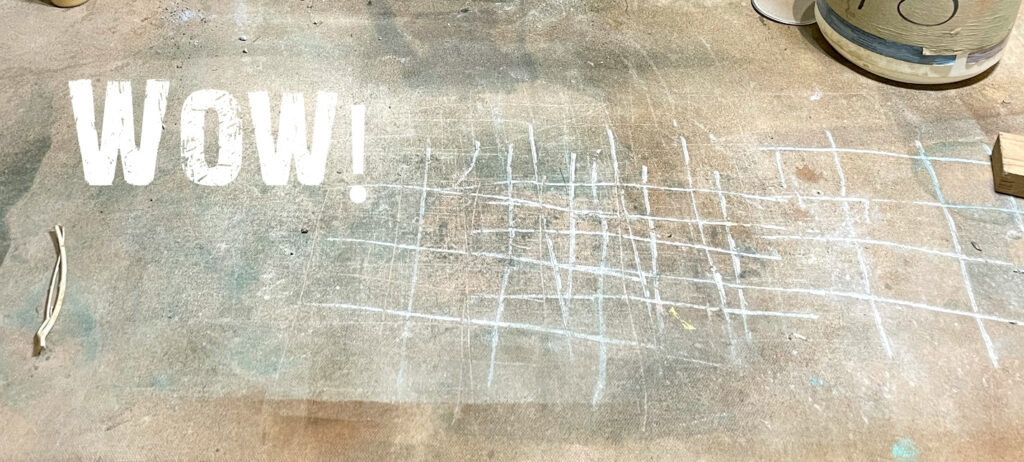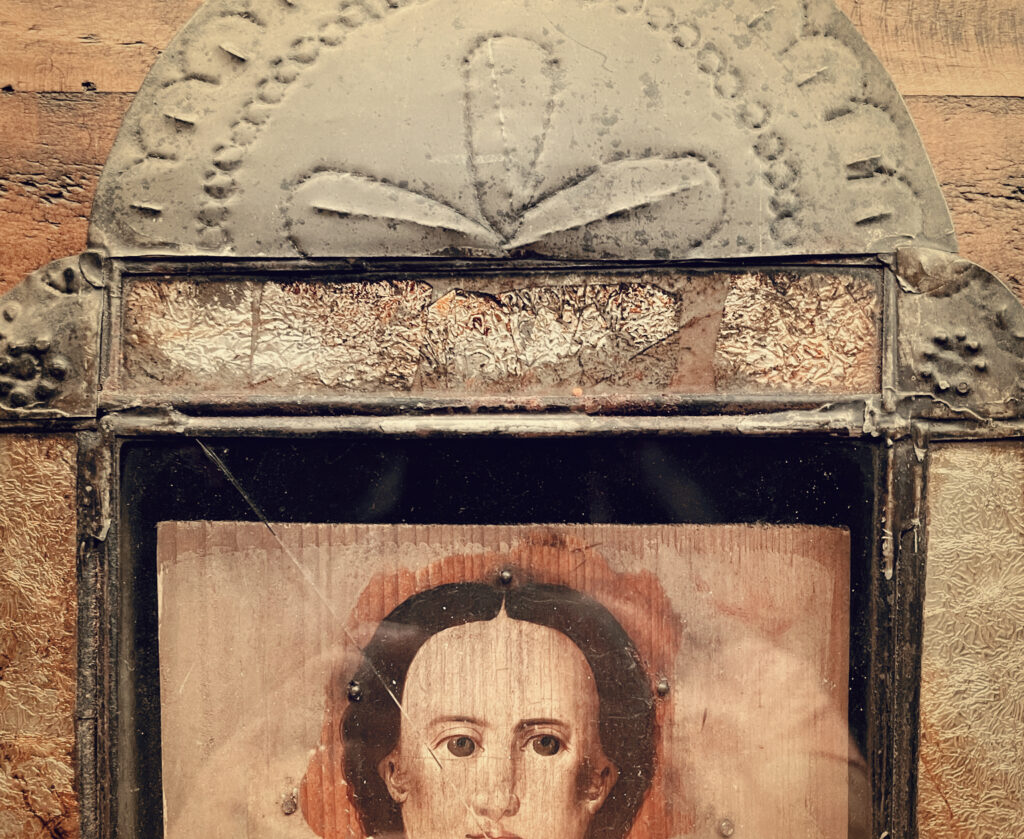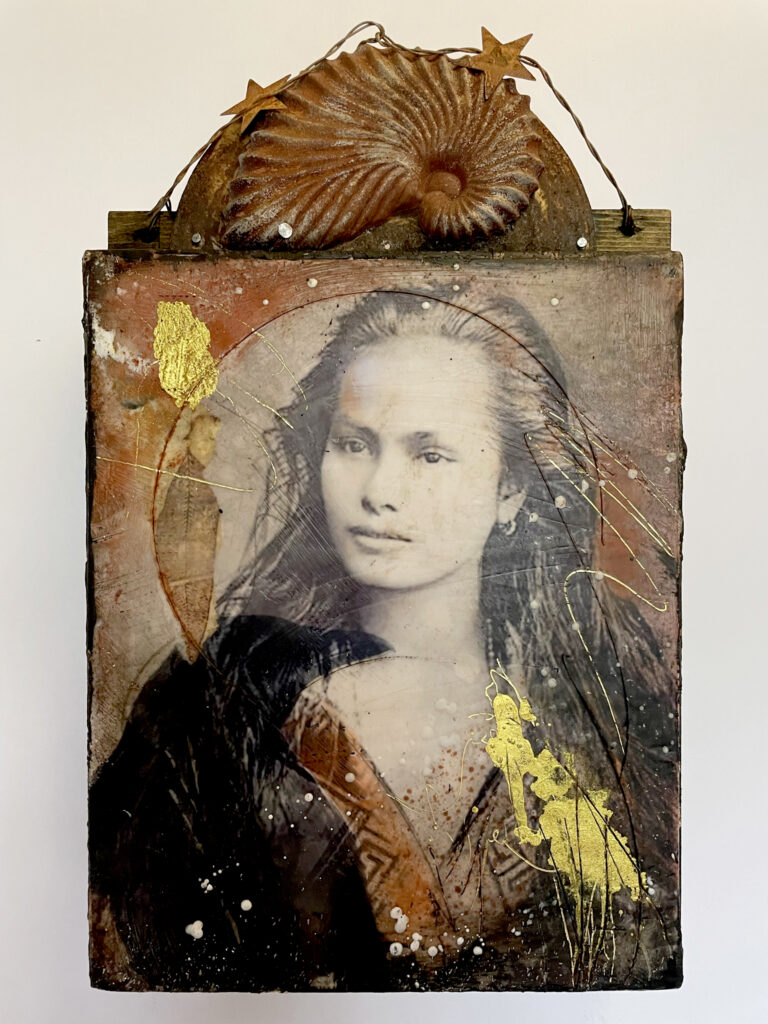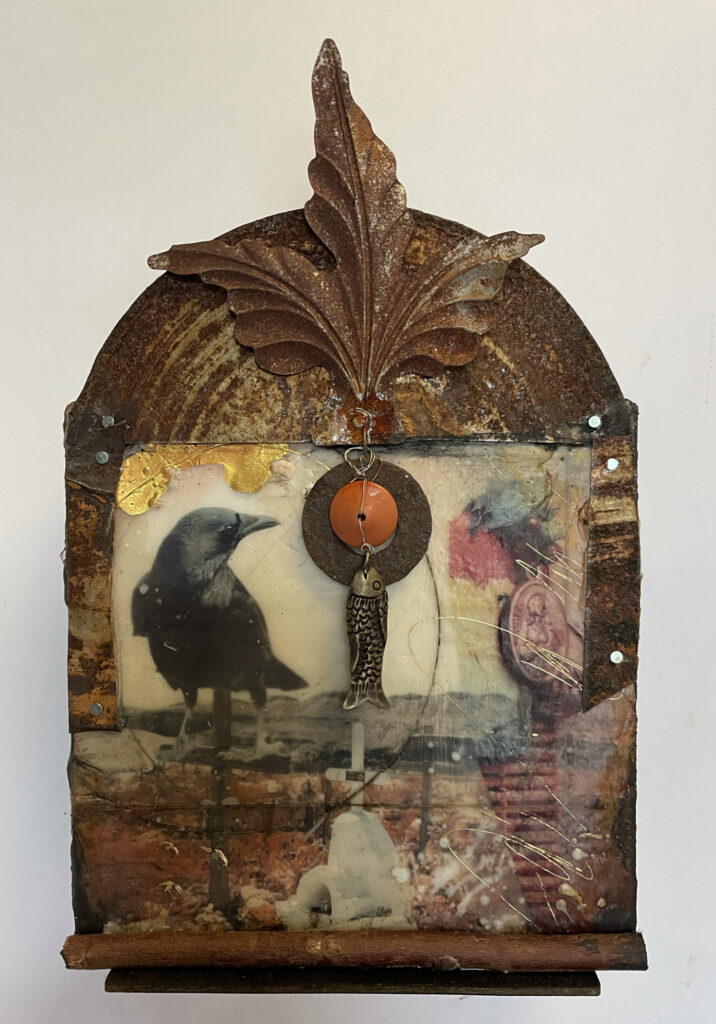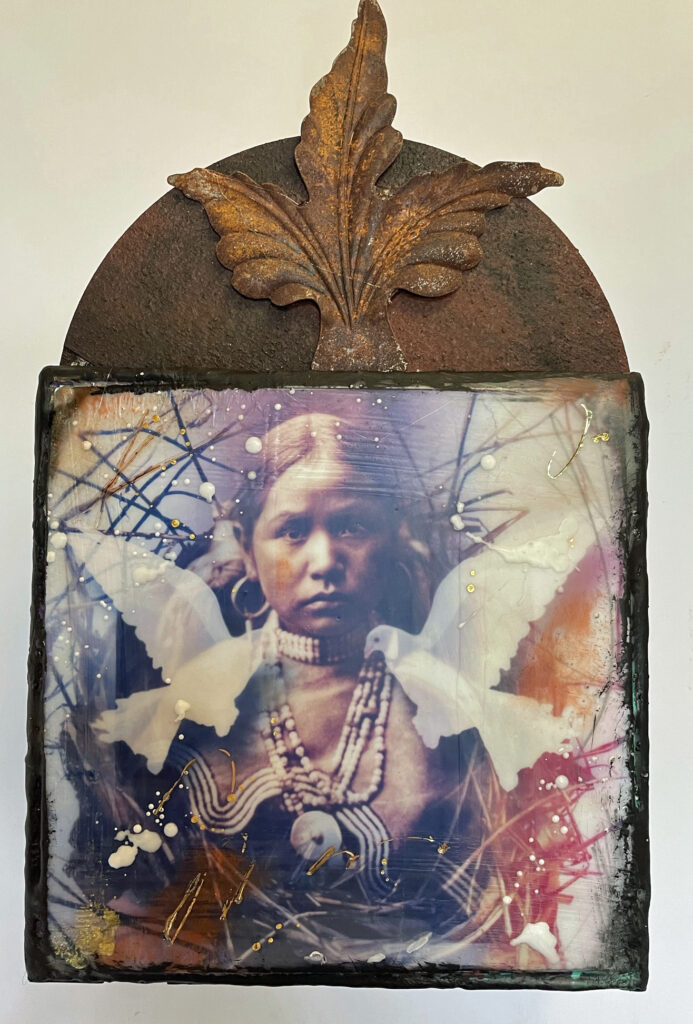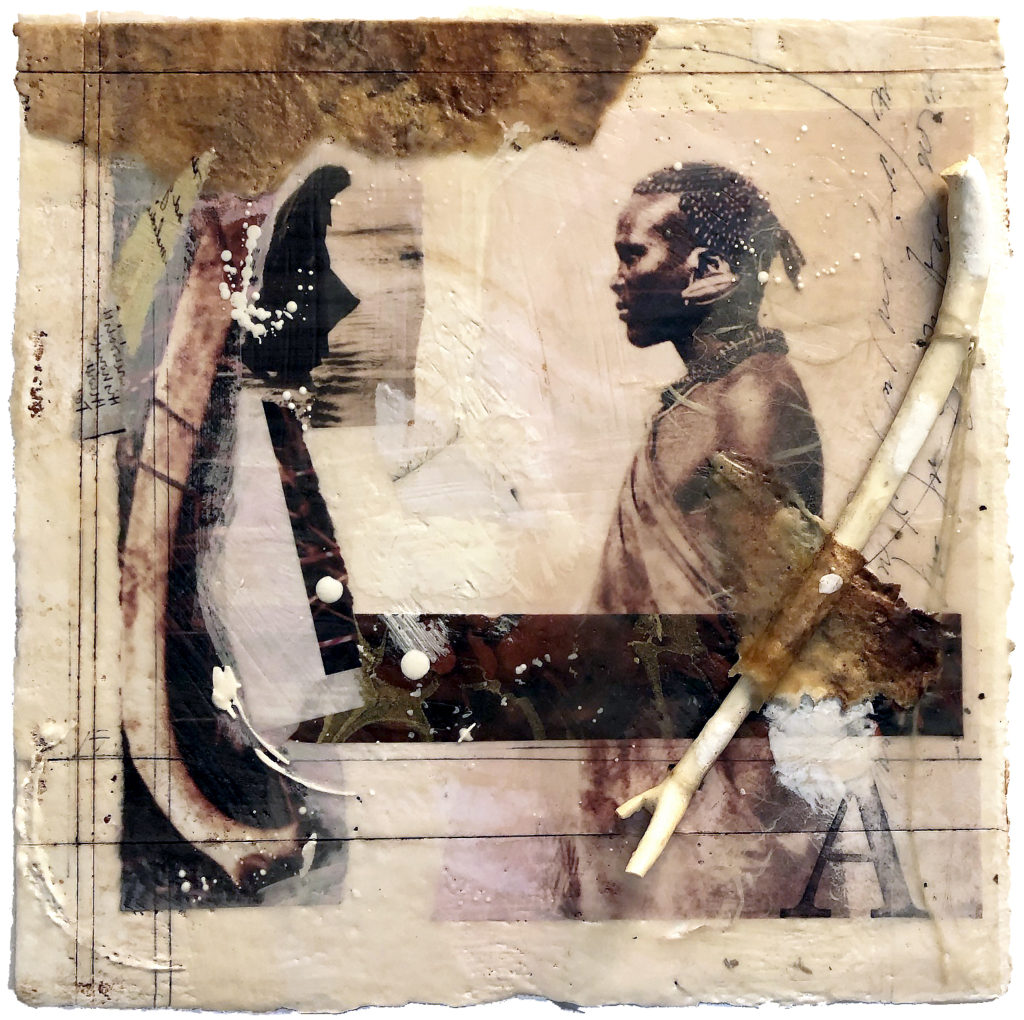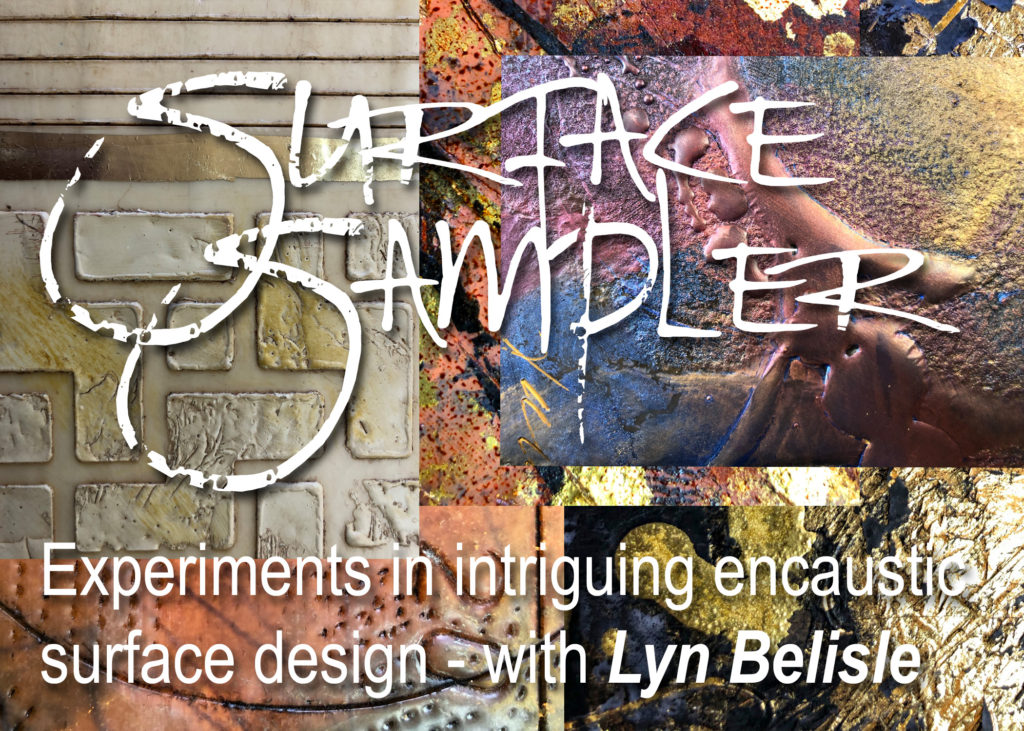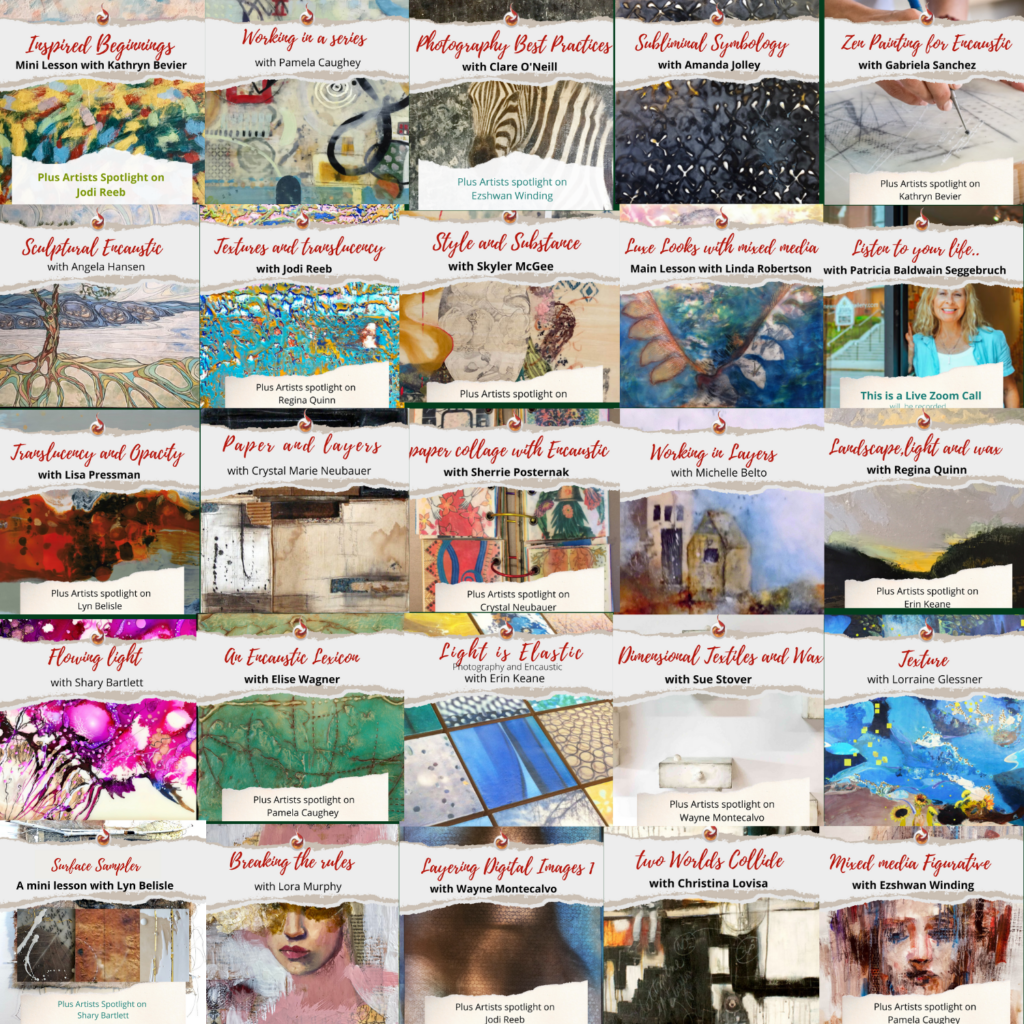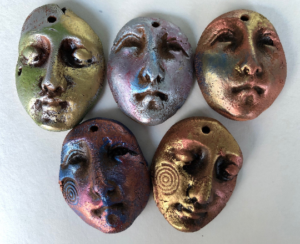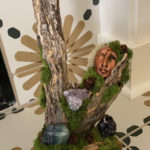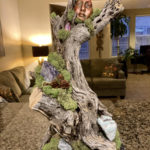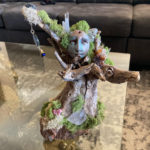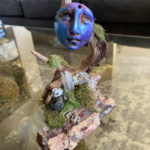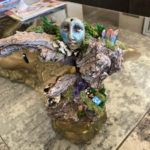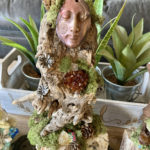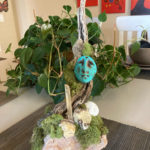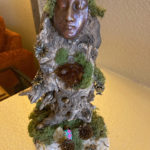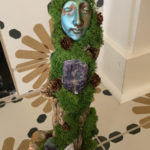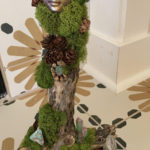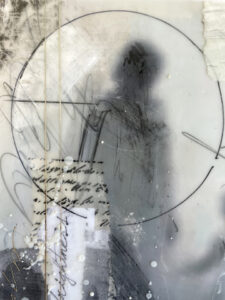
I am thrilled to have had three works accepted for this exhibition — Ephemeral/Ephemera: A special exhibition of small encaustic and cold wax works on paper at Mulranny Arts in Mulranny, Ireland. October 10- November 15, 2023
Mulranny is where I taught this summer and it is such a special place. This is how the Call for Entries described the theme:
Ephemerality is a state that is deeply integral to the human experience. Moments, objects, and beings; all exist for a brief time and then disappear or transition to another state. We consider that which is ephemeral to be particularly fleeting, and a poignancy resides there. Closely related, ephemera are the bits and pieces of our lives (typically paper items) that were not intended to be preserved yet become the memorabilia that we keep to memorialize those meaningful but passing moments.
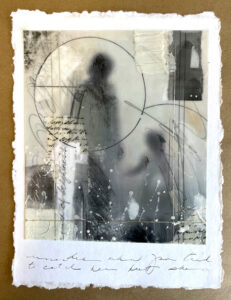
This is my first piece (above) and its description:
“This small work comes from a lifelong ephemeral dream of seeing my mother walking ahead of me in the fog when we lived in London when I was a child trying to catch up with her. I’m not sure where this dream came from because my mother was kind and caring and would never have walked away from me, but the dream persists.”
More about the Ephemeral Exhibition: Ephemeral/Ephemera will showcase works on paper that illuminate the concept of the ephemeral from an artist’s perspective, using wax as a primary medium. We invite national and international artists to consider how we experience ephemerality. Dreams, memories, chance encounters, nature, time, seasons, and even the nature of wax and paper itself are potential areas of exploration. What do we wish to hold on to, and what do we wish to let go of?
Here is my second piece, called “Wednesday’s Child” which is based on the photographs that Lewis Hine took of child labors in the US in the 1920’s. His photos ultimately changed the laws about allowing young children to work in fields and factories. I have been fascinated with these images for over a decade and return to them again and again.
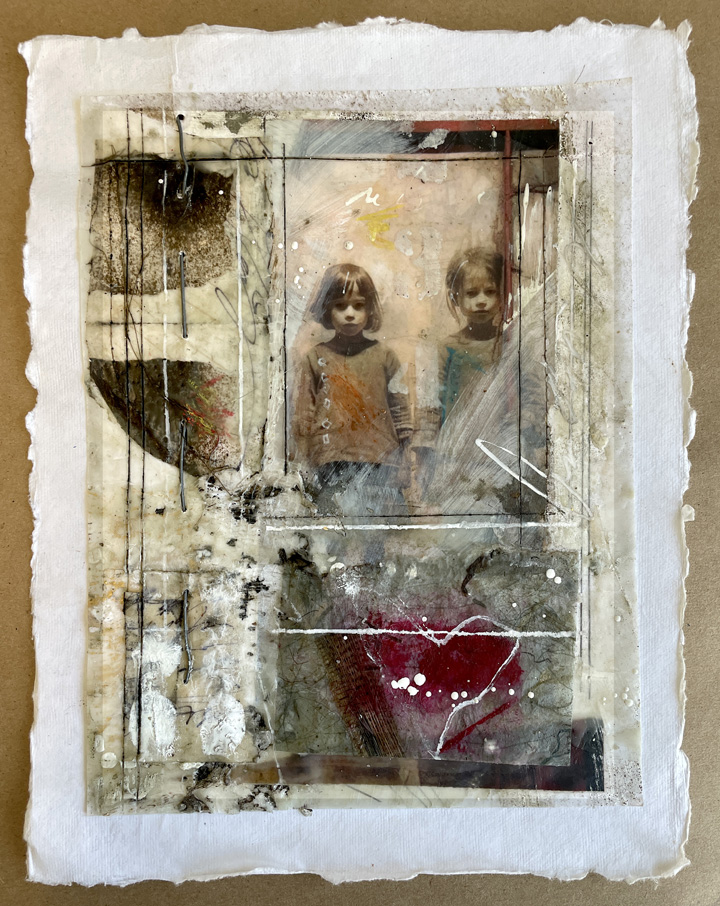
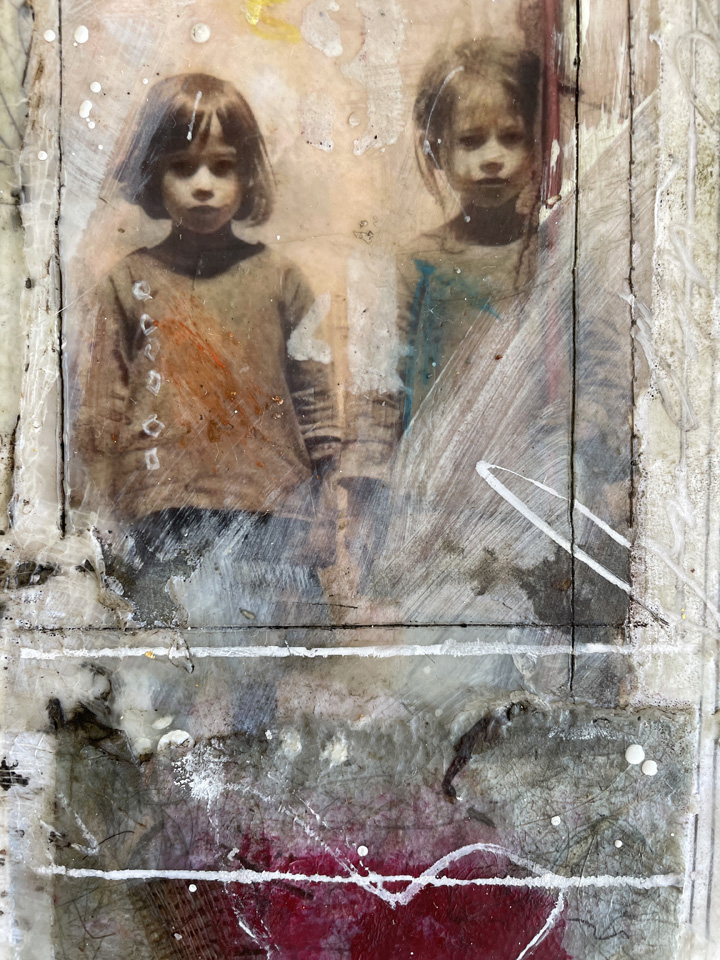
More about Ephemeral Art: It is a transient form of artistic expression that exists briefly, often changing or disappearing over time. It encompasses various mediums, including street art, sand sculptures, and performance art. Ephemeral artists embrace impermanence, challenging traditional notions of art’s durability, and provoking viewers to appreciate the beauty and significance of the fleeting moment.
This third piece is called “Caged Memories,” and it expresses how difficult it is to hold onto the ephemeral beauty of lost moments, even if we try to bind them to our hearts.

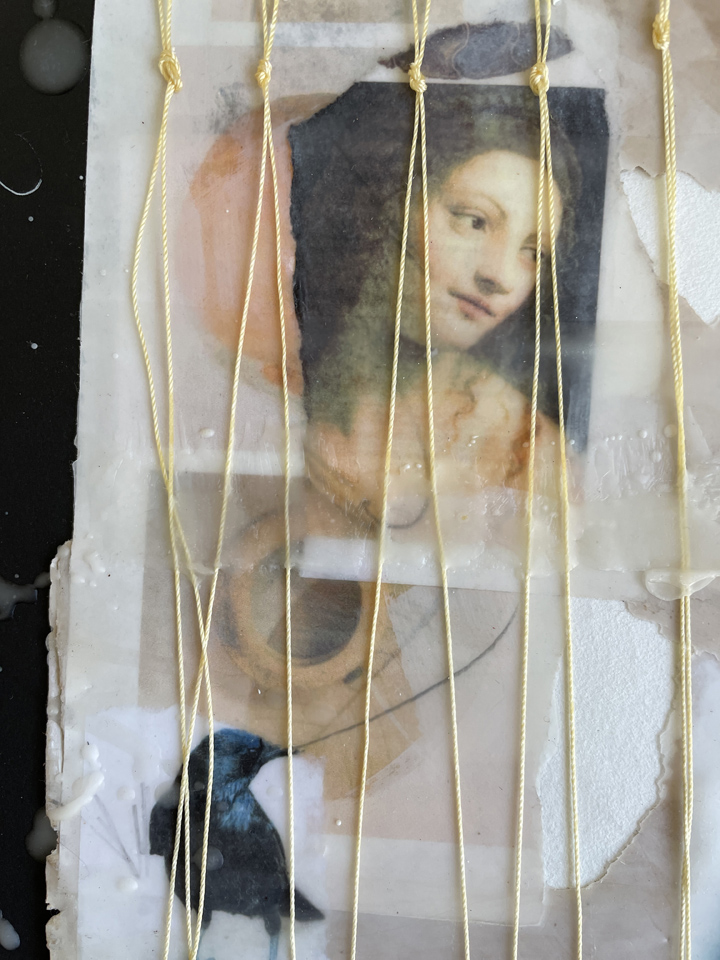
All of this has me thinking about the whole idea of ephemeral impermanence and its influence on me and so many other artists. It is a first cousin to the idea of Wabi Sabi, which as you know is the Japanese aesthetic emphasizing beauty in imperfection, transience, and simplicity, finding elegance in natural flaws and the passage of time.
I suspect as we get older we both identify with and grapple with the idea of impermanence. Seeing the beauty in it is one way to come to terms and be a peace with it, to “find elegance in the passage of time.”
Here’s a good quote related to the complex idea of ephemerality and impermanence:
“If we don’t insist on defining impermanence as unsatisfactory, then it’s natural to celebrate. Just a moment’s pause to consider the passing of the seasons is enough to convince anyone that not only is impermanence the source of all possible joy in this life but it’s the movement of life itself.” ― Lin Jensen, Bad Dog!: A Memoir of Love, Beauty, and Redemption in Dark Places
It’s is a good topic for this Monday – a day of loss and memories. And this week will be gone before we know it! Quick, make some ephemeral art – it won’t last forever but it will shine in its moment!
Thanks, as always, for reading SHARDS.

